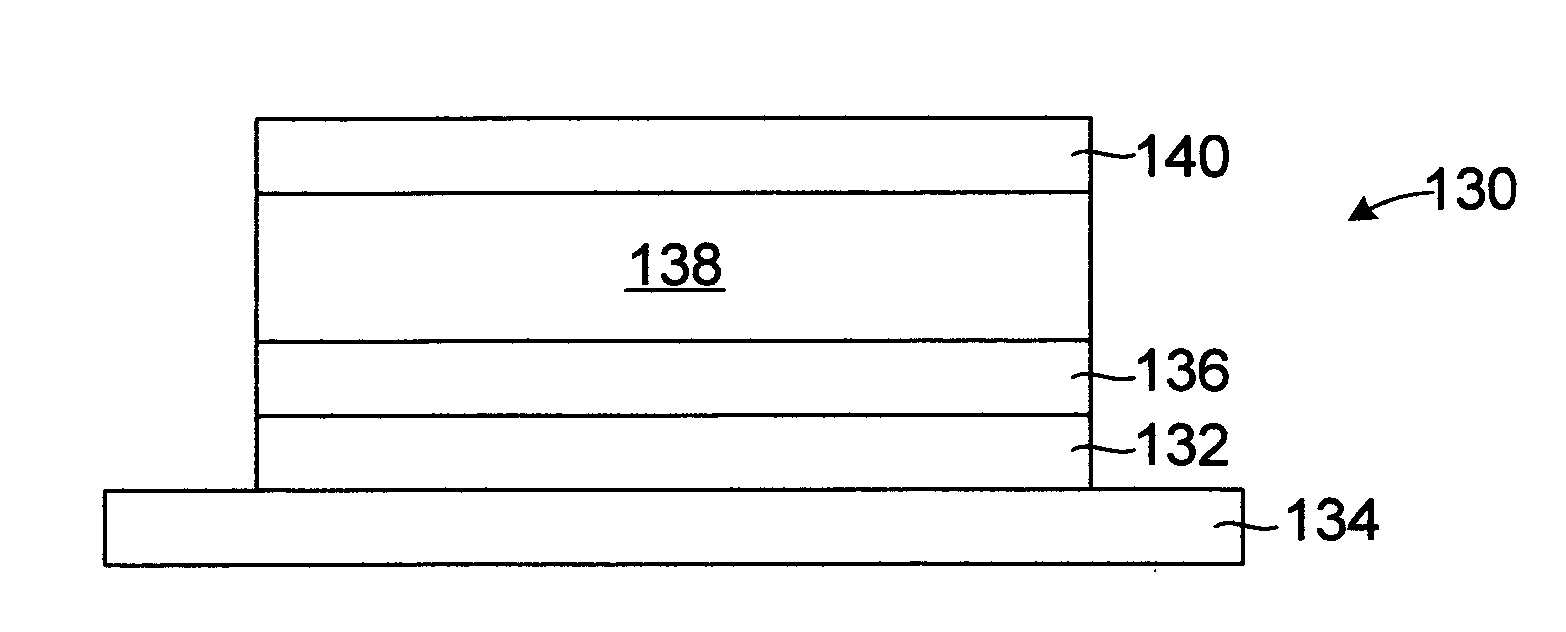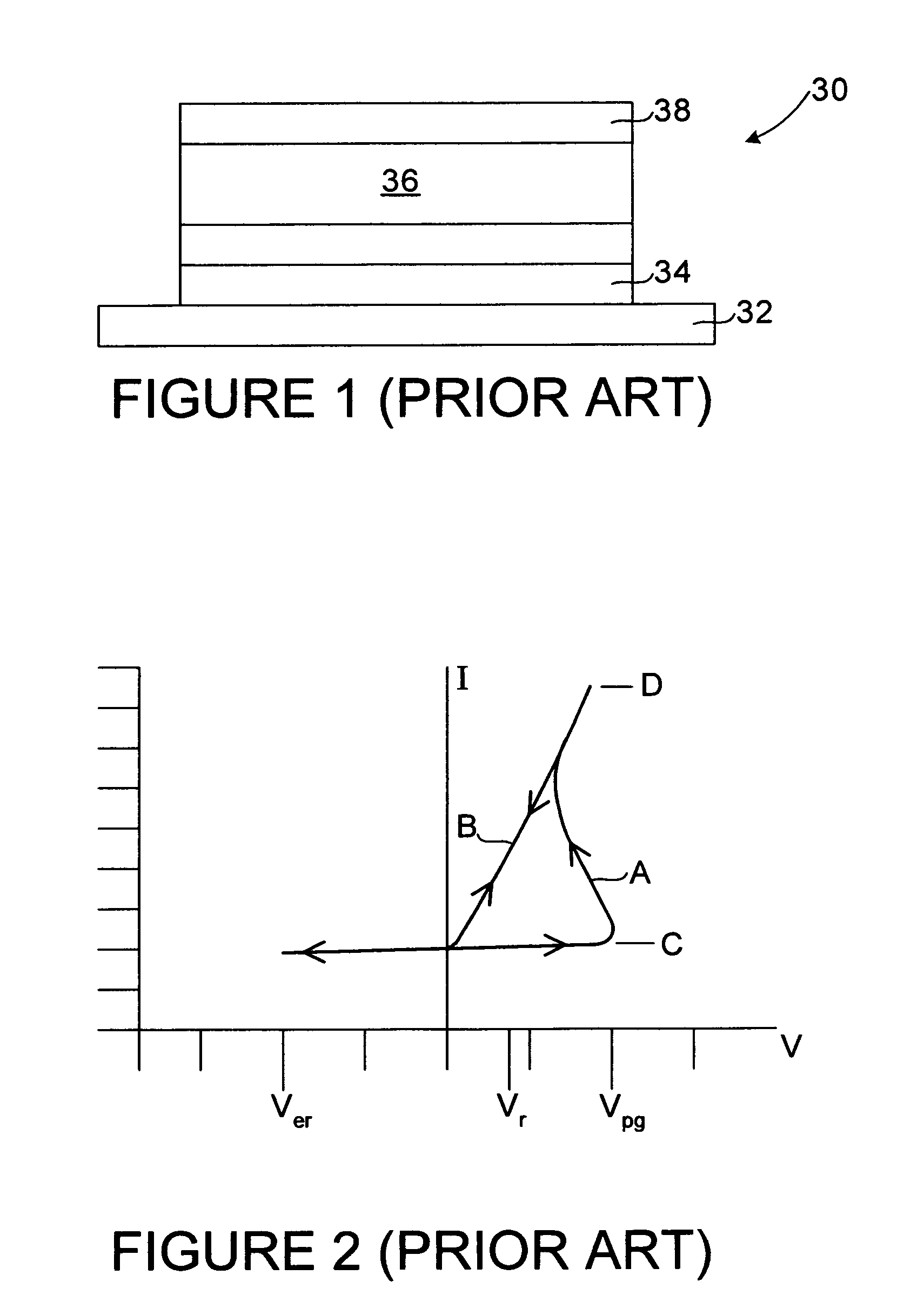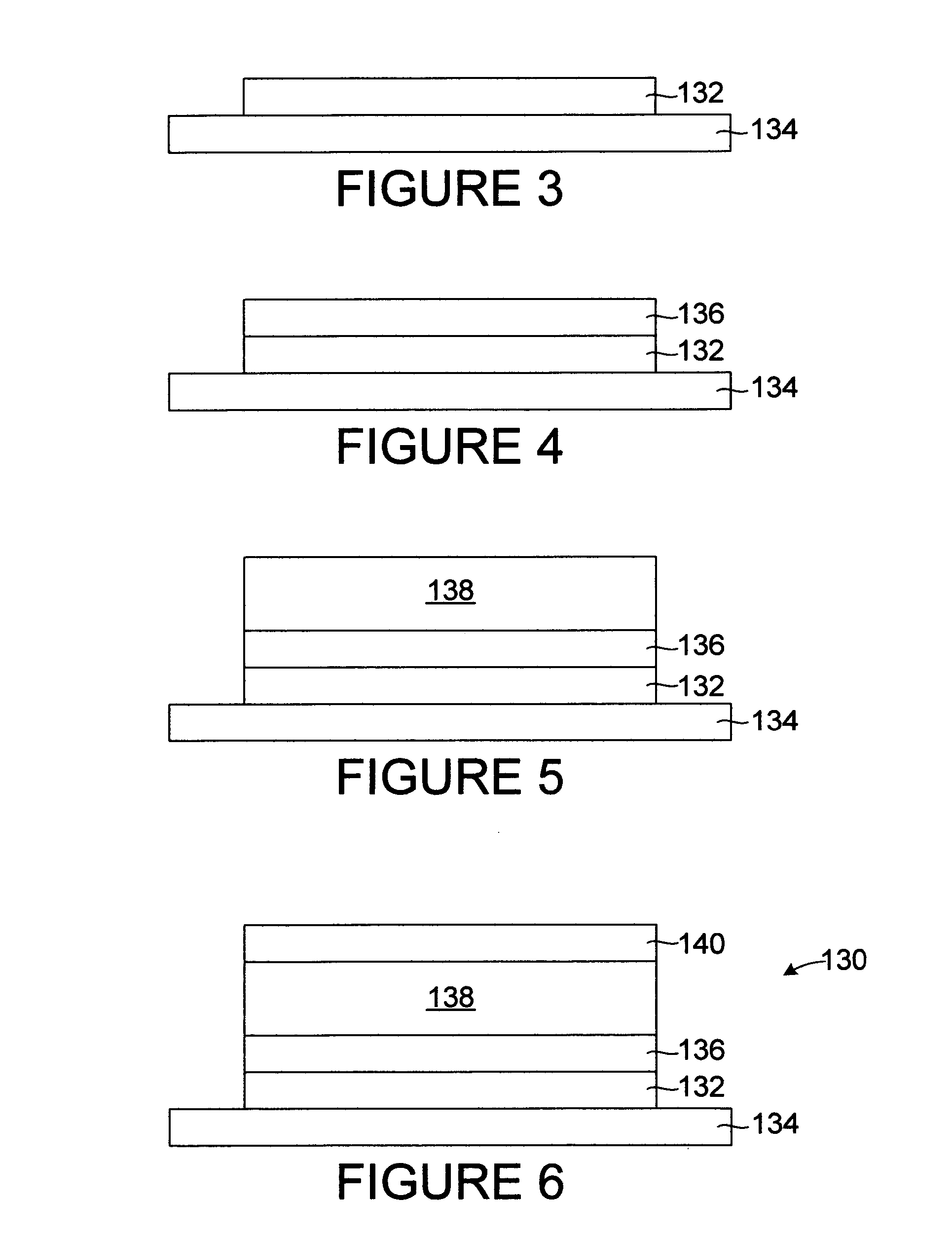Memory element using active layer of blended materials
- Summary
- Abstract
- Description
- Claims
- Application Information
AI Technical Summary
Benefits of technology
Problems solved by technology
Method used
Image
Examples
Embodiment Construction
[0023] Reference is now made in detail to a specific embodiment of the present invention which illustrates the best mode presently contemplated by the inventors for practicing the invention.
[0024]FIGS. 3-6 illustrate a process for fabricating a first embodiment of memory element 130 in accordance with the present invention. Initially, an electrode 132 is formed on a substrate 134 (FIG. 3). The electrode 132 may be formed by any suitable technique, such as physical vapor deposition, i.e. PVD (such as thermal vacuum evaporation, e-beam deposition or sputtering), ion plating, chemical vapor deposition, i.e. CVD (such as metal-organic CVD, i.e. MOCVD), plasma-enhanced CVD, i.e. PECVD, and the like. The electrode 132 in this embodiment is copper, but it will be understood that the electrode 132 can be formed of any of a number of materials including aluminum, barium, calcium, chromium, cobalt, copper, germanium, gold, magnesium, manganese, molybdenum, indium, iron, nickel, palladium, pl...
PUM
 Login to View More
Login to View More Abstract
Description
Claims
Application Information
 Login to View More
Login to View More - R&D
- Intellectual Property
- Life Sciences
- Materials
- Tech Scout
- Unparalleled Data Quality
- Higher Quality Content
- 60% Fewer Hallucinations
Browse by: Latest US Patents, China's latest patents, Technical Efficacy Thesaurus, Application Domain, Technology Topic, Popular Technical Reports.
© 2025 PatSnap. All rights reserved.Legal|Privacy policy|Modern Slavery Act Transparency Statement|Sitemap|About US| Contact US: help@patsnap.com



